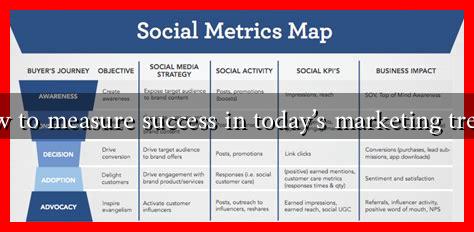-
Table of Contents
How to Measure Success in Today’s Marketing Trends
In the fast-paced world of marketing, measuring success has evolved significantly. With the rise of digital platforms, social media, and data analytics, marketers now have a plethora of tools and metrics at their disposal. However, understanding which metrics truly reflect success can be challenging. This article explores the key indicators of success in today’s marketing landscape, providing insights and examples to help marketers navigate this complex environment.
Understanding Key Performance Indicators (KPIs)
Key Performance Indicators (KPIs) are essential for measuring the effectiveness of marketing strategies. They provide quantifiable metrics that can help businesses assess their performance against their goals. Here are some common KPIs used in marketing:
- Conversion Rate: The percentage of visitors who complete a desired action, such as making a purchase or signing up for a newsletter.
- Customer Acquisition Cost (CAC): The total cost of acquiring a new customer, including marketing expenses.
- Return on Investment (ROI): A measure of the profitability of marketing campaigns, calculated by comparing the revenue generated to the costs incurred.
- Customer Lifetime Value (CLV): The total revenue a business can expect from a single customer over the duration of their relationship.
- Engagement Rate: A metric that measures the level of interaction (likes, shares, comments) a piece of content receives on social media.
The Role of Data Analytics in Marketing Success
Data analytics plays a crucial role in measuring marketing success. By leveraging data, marketers can gain insights into customer behavior, preferences, and trends. Here are some ways data analytics can enhance marketing efforts:
- Audience Segmentation: Analyzing data allows marketers to segment their audience based on demographics, interests, and behaviors, enabling more targeted campaigns.
- Predictive Analytics: Using historical data to forecast future trends helps marketers make informed decisions about where to allocate resources.
- Performance Tracking: Real-time analytics tools enable marketers to monitor campaign performance and make adjustments on the fly.
For instance, a case study by HubSpot revealed that companies using data-driven marketing strategies saw a 5-8 times higher ROI compared to those that did not. This underscores the importance of integrating data analytics into marketing efforts.
Social Media Metrics: A New Frontier
Social media has transformed the way brands interact with consumers. Measuring success on these platforms requires a different set of metrics. Key social media metrics include:
- Follower Growth: The increase in followers over time can indicate brand popularity and reach.
- Share of Voice: This metric measures how much of the conversation about a brand occurs compared to competitors.
- Sentiment Analysis: Understanding the sentiment behind social media mentions can provide insights into public perception.
For example, a campaign by Nike that encouraged user-generated content on social media resulted in a 20% increase in engagement and a significant boost in brand loyalty. This demonstrates how effective social media strategies can lead to measurable success.
Aligning Marketing Goals with Business Objectives
To effectively measure success, marketing goals must align with broader business objectives. This alignment ensures that marketing efforts contribute to overall company growth. Here are some strategies to achieve this:
- Set SMART Goals: Goals should be Specific, Measurable, Achievable, Relevant, and Time-bound.
- Regularly Review Performance: Conduct quarterly reviews to assess whether marketing strategies are meeting business objectives.
- Collaborate Across Departments: Work with sales, customer service, and product teams to ensure a unified approach to achieving business goals.
Conclusion
Measuring success in today’s marketing landscape requires a multifaceted approach. By understanding and utilizing KPIs, leveraging data analytics, focusing on social media metrics, and aligning marketing goals with business objectives, marketers can gain valuable insights into their performance. As the marketing landscape continues to evolve, staying informed about the latest trends and tools will be crucial for achieving sustained success. For further reading on marketing metrics, consider exploring resources from HubSpot.

